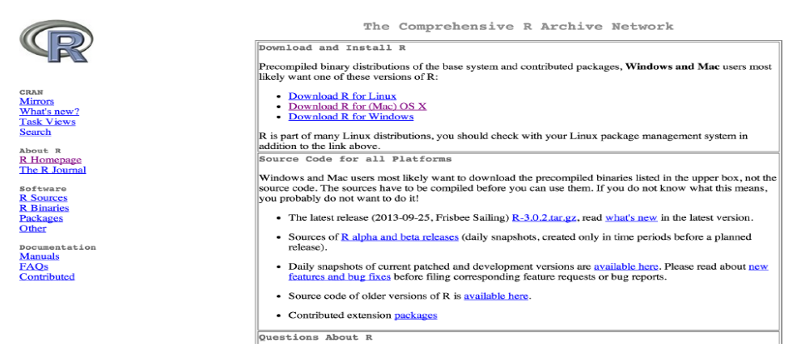
Renviron R_HOME_USER = /path/to/your/r/directory

Lines in the Renviron file should be either comment lines starting with # or lines of the form name=value. You may disable loading environment files with -no-environ The most important variables can be found on Environment Variables R Documentation. Renviron in the current working directory if it exists, or ~/.Renviron otherwise. The name of the user file is specified by R_ENVIRON_USER. The name of the site file is controlled by the Environment variables R_ENVIRON if it exists, and defaults to /etc/R/Renviron. R first loads site and user environment variable files. Please refer to Initialization at Start of an R Session to get a detailed understanding of startup process. Whenever R starts, its configuration is controlled by several files. Opening the R GUI will set R's working directory to $HOME, unless explicitly defined in your configuration files (.


When closing the session, you will be prompted as follows: Run ?Startup to read the documentation about system file configuration, help() for the on-line help, help.start() for the HTML browser interface to help, demo() for some demos and q() to close the session and quit. site refers to system-wide in R Documentation.Once in your R session, the prompt will change to > Note that some shells use the lowercase r command to repeat the last entered command. Make sure to use a capital "R" for the command.To start an R session, open your terminal and type this command: The installation of external packages within the R environment may require gcc-fortran. 8.3 Inhibit "Save workspace image?" prompt.7 Editors IDEs and notebooks with R support.It will show the documentation of install.packages() in R Studio as shown in below images. To know more about install.packages() function, you can type either ?install.packages() or help(install.packages). Instailing Package By function install.packages() We can also install the packages manually after downloading from R Standard and official website site or from other sources available on Google. We can install a package in R using function install.packages() or following the steps of submenu Install Packages.

Some of them are standard packages that come with R installation package, such as - tidyverse, shiny, ggplot2, readxl, devtools, plumber, gdata etc. There are several package (around 5k) available in R. The packages in R is developed by R Studio team as well as individuals. Packages are the collections of the R functions and data sets. Packages are add-ons that can extend R's functionality and perform specific tasks covering a wide range of statistics. In this article, we shall discuss and learn about the packages in R. It is a computing environment where statistical data may be implemented. It is also used in machine learning, data science, research, and many more new fields. R is an important programming language used heavily by statisticians.


 0 kommentar(er)
0 kommentar(er)
